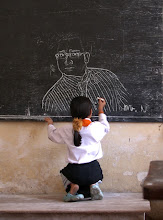
Students today live in a multimedia world and appreciate variety in their learning environment. Some forms of literacy they can develop include textual, numerical, visual, audio and multimedia. Visual Literacy can be defined as the ability to understand and produce visual messages. Both teachers and students can benefit by developing their abilities to create, use and evaluate visual resources.
Supporting research:
The Visual Literacy White Paperhttp://www.adobe.co.uk/education/pdf/adobe_visual_literacy_paper.pdf
The Visual Literacy White Paperhttp://www.adobe.co.uk/education/pdf/adobe_visual_literacy_paper.pdf
"Visual literacy includes such areas as facial expressions, body language, drawing, painting, sculpture, hand signs, street signs, international symbols, layout of the pictures and words in a textbook, the clarity of type fonts, computer images, student produced still pictures, sequences, movies or video, user friendly equipment design, critical analysis of television advertisements and many, many other things" http://www.ivla.org/org_what_vis_lit.htm#definition
"Young people learn more than half of what they know from visual information, but few schools have an explicit curriculum to show students how to think critically about visual data" Mary Alice White, researcher, Columbia Teacher's College
"The majority of information absorbed by human beings is collected with our sense of vision. It seems logical the we emphasize the development of visual skills as a way of preparing for successful and satisfying lives" page 4, A Guide for International Visual Literacy Association Board Members and Officers
Some Implications:(1) visual skills can be learned(2) visual skills are not usually isolated from other sensory skills(3) teachers can provide appropriate learning environments and materials(4) teachers can allow students to create their own visual messages(5) digital literacies (e.g. computer, visual, audio, print reading, information, multi-media) each require different skills(6) competency in one literacy does not necessarily transfer to another(7) visual arts can affect student emotions and aid understanding(8) students need to learn how to recognize and respond to visual and print messages of humor, irony and metaphor(9) students require guidance to distinguish between factual and fictional visual representations.
Some elements that may contribute to the 'look and feel' of visual resources include:- colour, proportion, form, shape, texture, emotion, feelings, typography, design and composition. For example - text that includes these elements can be made more visual (see below) - skilled use of typography is just one way to enhance communication.

No comments:
Post a Comment